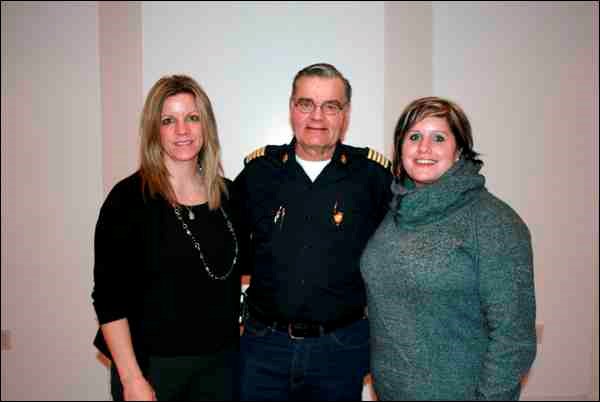The Leask volunteer fire department held an information meeting April 24 in the training room of the fire hall.
Advanced care paramedics Tara Oliver and Gennifer Bergson represented the Shock Trauma Air Rescue Society (STARS) and gave a presentation on the STARS helicopter and program.
There was representation from Blaine Lake volunteer fire department, the local Hutterite colony, Leask village council, RM of Leask council, Blaine Lake Ambulance, RCMP Blaine Lake detachment and Leask volunteer fire department at the meeting.
The presentation included factual information on the only STARS helicopter in Saskatchewan, the BK117. The province of Saskatchewan will be obtaining an AW 139 within a year, which is a larger, more powerful helicopter.
An estimated response time from Saskatoon to Leask, a distance of 95 kilometres, was presented to compare the two helicopters and inform those present how quickly the unit can respond. The BK117 would take approximately 24 minutes and the AW139 would take 18 minutes, plus an additional eight minutes to get into the air for each helicopter.
A video was shown explaining how to prepare an area for STARS arrival, what is required for STARS arrival and departure, the hazards and procedures and crash procedures.
There are six STARS bases located across the three prairie provinces of Alberta, Manitoba and Saskatchewan: three in Alberta, two in Saskatchewan and one in Manitoba. Currently, STARS has two locations to land in Saskatoon; one is at the airport and the other is at Wilson Greenhouse, which is the temporary helipad for RUH. A helipad is being planned and will be built at RUH with tentative completion date of 2016.
Discussion was held following the presentation. Clarification was requested regarding a STARS response to a call in the Leask area within the past few months and who determines when STARS is called and dispatched.
A question regarding invoicing for a STARS call was received. Presently Saskatchewan is the only province charging its patients. "Direct billing comes from the Government of Saskatchewan in the amount of $325," says Gennifer. "This is a considerable saving to the patient as it costs $5,100 to even get the helicopter and crew off the ground."
There was concern about the impending cost to Saskatchewan residents as well as who determines when STARS is dispatched. Health and medical insurance policy holders are encouraged to inquire with their insurance companies for coverage.
STARS is to be used as a complementary service to the land EMS system. With having only been operational for one year in the province, STARS has some operational challenges to fine-tune.
Both women will be travelling throughout the province to present critical care and simulation training to rural medical and hospital staff as well as police, fire and EMS personnel.



